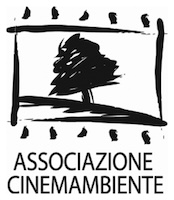Moana
Directed by
“I always like to give the natives parts. They're excellent actors, especially because they don't act and it is precisely the things done naturally and unconsciously that turn out to be the most important on the screen. That's also the reason why great actors almost look as if they're not acting, but none of them could be as unconscious of the outside world as a child, an animal. Now, one of these so-called primitive men, from the South Sea Islands, is so unconcerned by the camera's presence that he moves with the same naturalness as a child or a small cat.” (Robert J. Flaherty)
In 1926, after his experimental films, Flaherty went back to the documentary, with a big studio like Paramount behind him. He came up with the idea for Moana together with his friend Frederick J. O'Brien. The two stayed in the village of Safune, on the island of Savaii (western Samoa), looking for primitive environments that were interesting from an ethnological point of view. Here too (as in Nanook before it), Flaherty refused the idea of an already-organized story, in favor of the place's alluring reality. He figured that a too well-defined plot would inhibit the descriptive power of the camera.
Even though the film is based on (as in his feature films to come) a love story between two young Maori, innovative camera work avoids all emphasis on the two, so that even during love scenes, it's as if the characters have been plucked out of scenes from their own personal development.
Flaherty aims to show us that even a community like the Maori possesses a cultural tradition that is the product of reason and not only impulse, thus contrasting the most common western perceptions in vogue at that time. He describes their skills: fishing, organizing the harvest, craftsmanship, trade. He uses a similar technique when focusing on exterior aspects, people's homes, figurative arts, games.
The natural universe is documented by an ever-moving camera and a vision interested in everything in its path. People and their lives are shown for what they are: authentic existences, rife with natural needs, primary needs, and their struggle for survival.
In-depth analysis
About the Movie Moana
«The name of Robert Flaherty is not current among 21st century cinephiles – some indeed seem never to have heard of him. This oblivion is very different from his reputation at the time of his death, just fifty years ago. John Grierson, his most devoted and influential disciple, could unhesitatingly name him as “one of the great five innovators in the history of film” (the others were Méliès, Griffith, Sennett and Eisenstein). Herman Weinberg called him “that poet, that Melville of the cinema”. John Huston, who adored him, wrote at Flaherty's death, “He went all the way and saw everything”. The reaction, though, had set in even in his life-time. He was charged (not altogether unjustly) with a Rousseauesque or Wordsworthian romanticism, with using documentary material to recreate lost idylls of primitive existence. As ethnographic cinema progressed (largely under Flaherty's own influence) from the old travelogue days to new scientific disciplines, he was increasingly indicted for his manipulation of reality. People were shocked that the unforgettable sequence of building the Igloo in Nanook was only achieved by re-staging the construction over and over. Graham Greene, an early detractor, sneered that “Man of Aran did not even attempt to truthfully describe a way of life. The inhabitants had to be taught shark-hunting in order to supply Mr Flaherty with a dramatic sequence”. Perhaps it is an inevitable factor of art history that deification is followed by eclipse, whether temporary or permanent. Flaherty's career was as troubled and damaged as those of Stroheim, Eisenstein or Welles. In twenty-six years, he completed only four feature films according to his own conception: Nanook, Moana, Man of Aran and Louisiana Story. Of the rest, White Shadows of the South Seas was taken over by Hollywood and Woody Van Dyke, Tabu was bent to F.W. Murnau's melodramatic tastes; Elephant Boy was dragged back from India and reshaped in the papier-mâché forests and encampments of Denham studios. (“No extra elephants and rubber models”, wrote the sceptical Greene, “could retrieve what Flaherty had lost in India – a story line”). To be fair to his producers, Flaherty was not a conventional or easy director to deal with. The celebrated, endlessly patient observation to discover the secrets of his subjects was a mark of genius, certainly, but it cost money. Once he was bewitched by a location, he would stay on and on, until the months stretched into years. If Alexander Korda's patience ran out on Elephant Boy, it was only a matter of luck that for Man of Aran Flaherty had an infinitely more tolerant producer in Michael Balcon, who fretted and suffered, fending off the share-holders, as Flaherty stayed serenely on and on in the isles, sending back little but the bills that eventually tripled the budget.
For Grierson and the documentary schools of Britain and America, he was the innovator supreme. It was for Flaherty that Grierson had coined the word “documentary”; and Flaherty was for practical purposes the inspiration of the British documentary movement, whose influence was ultimately worldwide, and was to define the evolution of the best television documentary on both sides of the Atlantic. The impact of Nanook of the North, in Grierson's words, “was to introduce method and consideration into the fleeting camera glimpses of the early travelogue and give aesthetic pattern and significance to the record”. Flaherty brought interpretation and subjective response to the objective record of actuality. The demands of this new interventive approach stimulated technical innovation. His fascination with the things he saw incited him to a new freedom of camera movement (see how his camera anticipates the craftsmen's hands in Industrial Britain). Collaborating with Bell and Howell, he experimented with light-weight cameras and (in Man of Aran) with the new automatic camera. To explore ever more intimately his subjects' faces he pioneered the use of panchromatic film in Moana. All the documentarists of his day, watched and followed, right to the end. But with the passage of history, innovation in itself inevitably loses its power to impress, as the innovations become absorbed into regular practice. Looking again at Flaherty, fifty years after his death, we are not so touched by his technical discoveries as by more profound qualities in his films. Like his contemporaries we can still be astonished by the acuteness of his vision. Perhaps he was, as Graham Greene accused, often distracted by pictorialism and image: “How affected and wearisome were those figures against the skyline, how meaningless that magnificent photography of storm after storm”. Perhaps. But today what captures and concentrates our attention is not the great landscapes, but Flaherty's minute observation of the hand or the face of an anonymous potter or fisherman, intent upon his unspectacular daily task. Inspiring the image, and perhaps his most significant and enduring quality, is Flaherty's majestic humanism – though humanism itself is a quality that is no longer revered as it was thirty or more years ago. In private life, it seems, Flaherty was a sweet, expansive, ever generous, hospitable man. On location he and his wife and lifelong collaborator Frances would rent a large property where they would keep an open house for everyone around the film and for any passing traveller. Somewhere John Huston recorded how shamed he felt when one night in New York he and Flaherty were accosted by a desperate, drunken vagrant. Huston (as any of us would) simply wanted to escape; but Bob put the man in a taxi, took him home and fed and succoured him. Human generosity infuses and impels all Flaherty's films. Nanook and Moana and Tabu derive their persistent vitality – the quality that makes them, once we have seen them, part of our own lives, like familiar friends – from the intensity of Flaherty's own feeling for them. The fascination, instilling each one of his films, with the human battle for survival with a natural environment that is unpredictable in its rewards and punishments is so intense because of his feeling, his involvement with his characters. He honours, respects and loves each one; never patronises them or sees them simply as objects. It is no accident that the best-loved and the most memorable of the people whom he has made part of our lives are the small boys, the enchanting Sabu of Elephant Boy, sparkling young Joseph Boudreaux in Louisiana Story, the taciturn lad in Man of Aran. Flaherty entered their world and shared with them the discovery of a universe. John Grierson in his later years was capable of writing self-serving nonsense; but to the end he always wrote well about Flaherty, and left us one of the finest summations of the unique qualities that still touch us today in this unjustly forgotten master: “Flaherty returned us to the origins of all observation; where the seasons are; where flowers not only grow but are worn in the hair; where people take, or fight for, the fruits of the earth, and dine well and pour a ceremonial libation to the Gods and dance in thanksgiving: where the difference between a man and an animal of the wild is only one of degree, where storms come and go and are merely a great spectacle in the passing and children are forever the assurance that time is timeless and the horizon finally without too much pain”».
(David Robinson)







